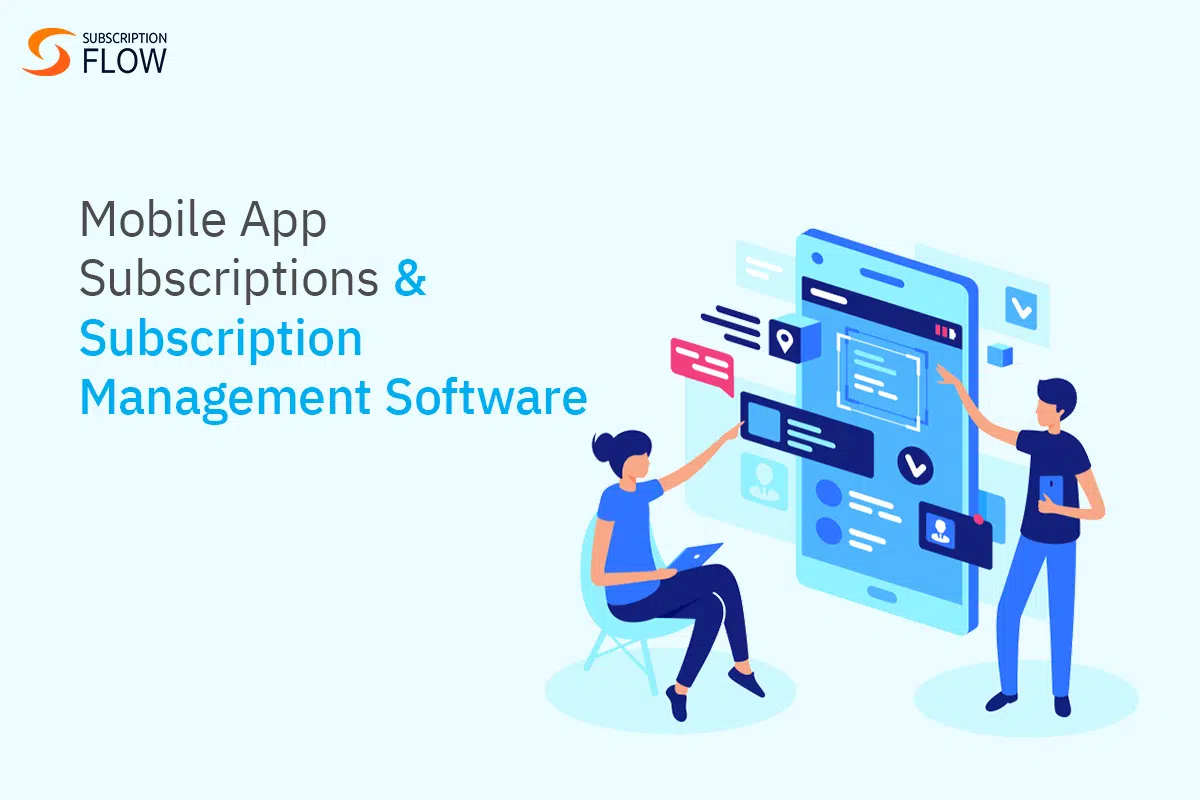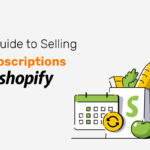
Managing Mobile Apps Subscriptions with Subscription Management Software
Thinking to make your mobile app subscriptions reach the heights of scalability? Let’s make it possible.
Mobile app Subscription is one of the hottest trends ever since people have started to subscribe to applications that avail the best of the best benefits. With applications like Netflix, Amazon prime, and plenty of other video games, the subscriptions for mobile apps are taking precedence like anything.
Statistics show that there are around 1.96 million apps on the Apple App store whereas 2.87 million applications are available on Google Play Store.
Technology evolution has given impetus to mobile applications and their growth over time. There is a galore of mobile applications available on the Google Play Store and iOS app store. With that being said, there are different types of mobile applications as some are free, some offer in-app purchases, and a few offer to subscribe to the app for exclusive features. With different pricing strategies for applications, companiea adopt different model for their pricing plans and management. Let’s look at various strategies for app monetization.
App Monetization Strategies
Strategies keep on evolving as per the requirements of customers and changes in the market dynamics. Monetization strategies are adopted to improve the revenue potential while increasing user growth. However, there are five main strategies for mobile app monetization. Let’s look into the types.
Free App with Subscription Model – The strategy for app monetization that offers a free app with a subscription model enables customers to use the app but with limited features. To avail of the exclusive features, the user will need to take a subscription for the mobile app. This strategy helps build an initial user base and later turn them into paid users.
Free App with In-Purchase Model – In this model, the app is available to users for free as they can access various features without any required purchase unless or until the user wants to upgrade. If the user wants to use advanced features, then in-app purchases must be made to use them. A very common example of this model is seen in video games, where users are asked to watch a video to get an extra life or to avail of features that are not available for free.
Paid App Model- As the name suggests, these mobile applications are not available for free. Users have to purchase apps to use features and other perks as well. The content of these mobile apps is hard to find.
Mobile Apps Monetization: Then Vs. Now
The comparison of then versus now in mobile apps monetization strategies that have evolved over years. in the previous years, app monetization was inclined toward in-app purchases abbreviated as IAP.
In-App Purchases
There are different types of in-app purchases that are offered in mobile apps subscriptions. In-purchase app advertisements are one of the types where users see different advertisements of whatsoever the product is while using the mobile app. The second type that comes under it is rewarded videos. It is more common among video games users. Mobile apps are also monetized through pop-up ads or interstitial ads.
Freemium or Subscription Model
Later, when these practices were quite prevalent in gaining revenue through in-app purchases, the subscription model for mobile apps plunged in. This model is also known synonymously with the term Freemium. Undoubtedly, this was a turn in the traditional practices as developers have started to use this model. Spotify, Pandora, Netflix, and some other applications offer subscription models – an emerging trend.
The Rise of Subscriptions in Mobile Apps
The rise of subscription models for mobile apps monetization started around 2012. Several mobile apps decided to shift from paid version to the freemium model for several reasons. Apps like notability, Pocket, etc. are suitable examples to describe the shift. The shift was taken due to different reasons as monetization strategies were rethought.
From One-time Payment to Subscription-based Monetization
When businesses switch to a subscription model, they open a wide arena of work and good revenue potential. Mobile application owners have discussed the reason for switching from paid version to freemium or subscription-based monetization. It is said that from the perspective of business, it is better to get recurring revenue rather than a one-time payment. To give reasons for it, again from a business perspective it does not make sense to use all features with one-time payment while customers get to benefit from it incessantly.
This perspective proves to be the bedrock of subscription in mobile apps for the fact that it is profitable with a recurring customer database. Also, users and customers have adapted themselves to the freemium or subscription model as this is more reliable and satisfactory to them.
Mobile App Subscription Market Insights
- Video games apps subscriptions are expected to produce 11 billion dollars in annual revenue by 2025, up from 6.6 billion dollars in 2020.
- Subscription apps on Google Play grew 79% from $1.4 billion in 2020 to reach $2.5 billion in 2021.
- In the United States alone, Netflix will have roughly 70 million subscribers. Amazon, on the other hand, competed with Netflix for the most American members, and it is expected to surpass Netflix by 2027, with over 101 subscriptions.
- Disney Plus, abbreviated as Disney+, is predicted to garner 51.3 million subscribers.
Unlocking Benefits for Mobile App Subscriptions
Apart from the subscription model for mobile applications, the recurring revenue model as a whole has proven to be the most beneficial for merchants, business owners, and developers. It has helped in unlocking revenue potential to a great extent along with the scalability of a business.
For iOS users and google play store users, the subscribers of over a year are charged with less amount hence less commission. It is for the fact that retaining subscriber is of great importance and to keep them more attached and engaged with the app they incentivize them. Considering another fact is that having a high subscriber retaining rate leads to the translation of good revenue potential.
From the user perspective, it is very obvious that customers who have subscribed to use the app engage more than the customers who are ordinary users i.e., who have not subscribed to the mobile application.
Managing Mobile Apps Subscriptions with Subscription Management Software
Subscription management software has a crucial role in every subscription-based work. Mobile applications working on subscription models need to have agile and robust platforms that can manage apps processes seamlessly. To keep the customers updated and developers abreast with an app and user activities, a subscription management system is the most viable option to go for.
It would not be wrong to say that subscription-led mobile applications are riding the subscription wave. They both go hand in hand as complementing each other. Let’s begin to read how mobile app subscription management is carried out.
Automated Subscription Management
Automation is the backbone of all technical processes as it ensures flexibility, accuracy, and efficacy as well. As the number of app users and subscribers grows, handling databases manually could lead to a quagmire. It is always better to be safe than sorry.
In the light of what already has been aforementioned earlier, the need for a subscription management system becomes essential. Automation helps in optimizing the system such as revenue processes, billing models, invoices, and much more. With automation, developers can look at the other areas that need manual handling such as optimizing user experience, app performance, and features.
Subscriber Intelligence
Mobile applications need to have a robust system that has complete access to the subscriber’s database. Not only this, but for lessening the churn rate and increasing the subscriber retention rate, it is vital to understand customer behavior, user activity, and up-to-date user information. Subscription management software has cloud-based storage that helps in storing subscribers’ data in a safe place that can be remotely accessed.
A platform for subscription management like SubscriptionFlow is powered by artificial intelligence and equipped with robust tools for analytics and reporting, therefore, mobile apps subscripts can be better analyzed with the help of agile analytics and reporting. Analytics and reporting help to get insight into sales, refunds, chargebacks, revenue leakages, and much more.
Categorization and Segmented Communication
It is not obvious that every subscriber would use the same subscription plan as different subscribers use different plans according to their needs in mobile applications.
Subscription management software for mobile apps makes data organized and streamlined that eventually helps in managing customers’ databases.
Moreover, the communication between sellers and subscribers is handled by the software. In case of payment failures, card decline, or payment issues, subscribers can send emails to keep them in the loop. This helps in reducing churn rate and revenue leakages.
Analytics and Reporting
Mobile applications need to gauge their performance with special reference to the app subscribers. With analytics and reporting, mobile apps can easily understand the revenue potential for their businesses along with other metrics that play the most important role in mobile app subscriptions.
These metrics could be Annual Recurring Revenue, monthly recurring revenue (MRR), Customer lifetime value (LTV), churn rate, and much more. Another important metric is the Average Revenue per User (ARPU) to estimate their revenue based on individual percentages.
Bottom Line
Everyone wants to retain their customers forever, and so do mobile app developers. Recurring revenue and retained subscribers might seem easy to do but it is not the case. The subscription management system like SubscriptionFlow keeps developers and subscribers aligned with each other with full-bodied features and solutions that can be tailored to the needs of customers.
Schedule a demo now with SubscriptionFlow and take your mobile app subscriptions a step ahead.











